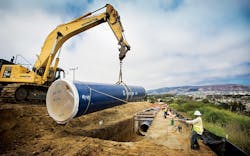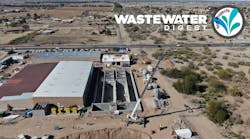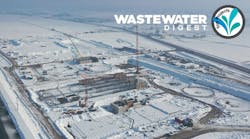Cost: $23 million
Location: Millbrae, San Bruno, South San Francisco & Colma, Calif.
Year: 2016-12-12
Size: 4,700 ln ft
Owner: San Francisco Public Utilities Commission
Designers: San Francisco Public Utilities Commission, Kennedy/Jenks Consultants
Contractor: Ranger Pipelines Inc.
Mention of the San Andreas Fault can send a trickle of dread down the spines of many Californians. Running hundreds of miles across California, this fault looms as an increasingly present threat of a massive earthquake. Alternatively, its presence is a reminder to proactively face such a disaster. Upgrades like the Peninsula Pipelines Seismic Upgrade Project (PPSU) strengthen the northern San Francisco Peninsula’s earthquake readiness.
In 2002, the San Francisco Public Utilities Commission (SFPUC) launched a $4.8 billion water system improvement program designed to provide reliable, affordable, high-quality water in compliance with environmental and water quality regulations. It also needed to transmit this water in a system with improved seismic and delivery reliability, while achieving water supply level of service goals.
As part of the improvement program, SFPUC initiated the PPSU to strengthen the seismic reliability of its pipelines, including the 60-in. Sunset Supply Branch Pipeline, the 66-in. San Andreas Pipeline No. 03, and the 54-in. San Andreas Pipeline No. 02. These three transmission lines connect SFPUC’s 180-million-gal-per-day Harry Tracy Water Treatment Plant to communities on the northern San Francisco Peninsula. Thus, a seismic threat in this area becomes a threat to the availability of clean water.
In order to prevent an interruption in delivery, the pipelines were reinforced at fault crossings and areas prone to liquefaction. These updated features can withstand a magnitude 7.4 seismic event on the San Andreas Fault.
“The work accomplished by the project team to replace an existing 42-in. crossover valve and install two new 54-in. inline valves at the SFPUC’s Baden Valve Lot was truly a once-in-a-generation achievement,” said Joseph Liu, P.E., project construction manager for SFPUC. “The valves were located on the two major water transmission pipelines, which supplied the majority of the water to the higher elevation areas in the northern San Francisco Peninsula.”
The pipeline reinforcement included several features. Large sections of the pipelines—totaling more than 4,700 ln ft—were replaced with thicker-walled welded steel pipe. Additionally, at fault crossings, the team used nonconventional backfill materials such as pea gravel, expanded polystyrene foam and low-strength cellular concrete for the trench backfill design. These materials create a soft trench that would allow for up to 24 in. of displacement during a seismic event. Finally, the new inline valves and a new 42-in. crossover butterfly valve provide additional operational flexibility.
Because this project could potentially impact water delivery to millions of customers, cooperation between the project team, the operations group and wholesale water agencies was crucial. The team determined low-demand usage windows to deconstruct parts of the transmission system in order to affect customers as little as possible. Even with such restrictions, the project met all its deadlines and successfully completed upgrades in October 2015.
Project Year: 2016-12-12Contractor: Ranger Pipelines Inc.Designers: San Francisco Public Utilities Commission, Kennedy/Jenks ConsultantsOwner: San Francisco Public Utilities CommissionLocation: Millbrae, San Bruno, South San Francisco & Colma, Calif.Cost: $23 millionSize: 4,700 ln ft

